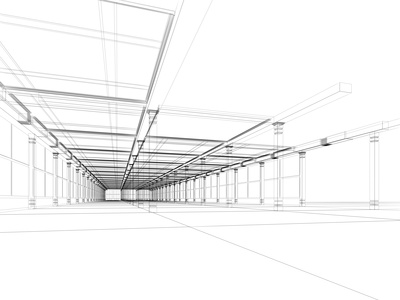Taking The Pain Out Of Painting
There's nothing quite like the satisfaction of painting that first, broad stroke of emulsion on a freshly stripped or plastered wall, but the quality of the final result depends almost entirely on how much preparation you put into reaching that point.
Above all, ensure the paint surface is even, and free from cracks and bumps. Mostly you'll be over-painting a previously decorated wall, so make sure you've smoothed any blemishes with filler. And remember to use a facemask if you're doing any sanding.
If you're painting over wallpaper, the paper needs to be in good shape before you start, as any rips or tears will show through your brushwork no matter how many coats you apply. Run a little test beforehand to make sure the finish on the paper will accept the paint you want to use some plastic finishes reject water-based emulsion. Stripping wallpaper is a time-consuming, tedious job, so decide whether it's strictly necessary before you start. If it's not actually ripped, it's a whole lot easier to wash it down and paint over it.
And while we're on the subject of paint - always buy the very best you can afford. You'll end up saving money with local licensed companies, time and energy as thinner, cheaper paints need many more coats to do the job than thicker, more expensive brands. Good paint will cover anything in three coats, and often just two. Thin paint is guaranteed to drive you crazy as you slap on coat after coat, trying to cover that terrible floral design wallpaper underneath, and you'll probably end up throwing it out and getting some decent paint instead anyhow.
So, your walls are ready to take paint. Are we good to go? Not just yet.
The secret to getting a perfect finish is simple low-tack masking tape. The steadiest hand can't compete with the crisp edge you get from taking the time to mask round windows, doors and other features. It speeds the job up too, as it's quicker to mash paint into those nooks and crannies than painstakingly inch past them. Position the tape, and then rub the edges with your thumbnail so paint can't bleed underneath.
Modern emulsion formulas resist separation well, but even so your paint needs stirring before use. For smaller tubs you can do this with a clean stick, but for multi-gallon tubs invest in a whisk for your powerdrill. You're aiming for a satisfyingly creamy liquid which can be rollered on evenly.
At this point, and before we start painting with a local pro, let's take a look at the brushes and rollers we'll be using. Again, buy the best - nothing is more frustrating than shedding bristles from a cheap brush all over your handiwork. Ideally, you want to use trade quality brushes which have been used several times before.
For rollers, always use new sleeves, though the handles can be reused. Properly looked after, the handles can last decades, but the sleeves wear unevenly after only two or three uses, which impacts on finish quality. Rinse the sleeves in cold water and let them dry before and after use.
If you're painting on to fresh plaster, you'll need to dilute the first primer coat with about 25% water so it can soak right into the plaster and give a good foundation for later coats.
OK, off we go. Broad, sweeping strokes up and down, and side to side, with dextrous use of the roller to smooth over drips and stripes. The first coat will likely look a little patchy, but the second and third should give you a dense, solid color. Touch up masked corners and edges with a brush, then skilfully roller over the brush marks.
Carefully remove the masking tape before the paint has dried hard, but not while it's still tacky, and you're done.
If all this seems like an awful lot of work to do in your precious downtime, it's definitely time to call in the experts. Not only do you get a clean, professional job done when it suits you, but some contractors will pass on a proportion of the trade discount they get on materials, saving you both time and money.
|
|

